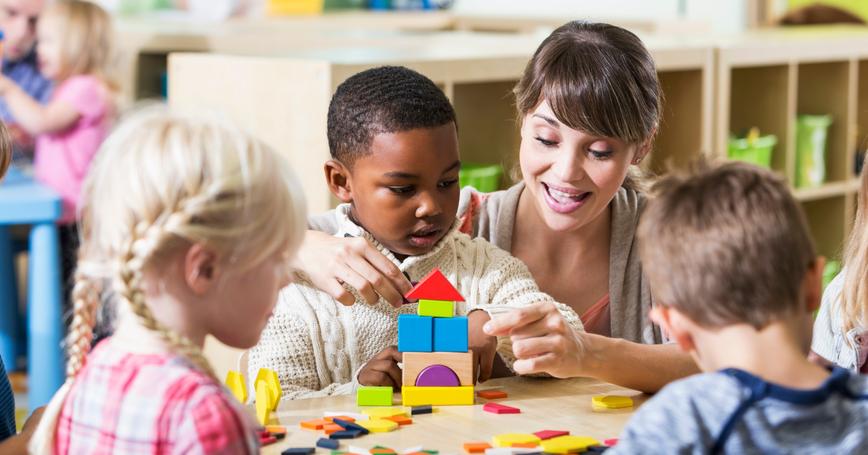Menu

The Primary program is a multi-age three-year cycle that includes Montessori Primary Classes children aged three through six.
Children experience an academically enriched environment within a well-ordered social community. A special characteristic of the Primary program is that the classroom encompasses the areas of learning and socializing that are designed to foster independence, concentration, self-motivation, respect for self and others, and a love of learning. Another feature of the Primary classroom is that the materials are accessible to the children. They are free to choose activities appropriate to their level and progress and develop at their own pace.
The materials and lessons are categorized under the following areas, which are all interrelated to help children achieve maximum success.
Practical Life (PL) exercises is geared to achieve maximum potential of the whole child. PL goals includes but is not limited to the adaptation of the child to his/her organic environment and fosters growth of his/her independence, higher-order learning, concentration and self-control. This goal is accomplished through activities motivated by purpose, implementation of coordination and controlled movement, inspiring the child to be aware of his/herself and surroundings. This in turn becomes a prelude to success for the child where the child becomes established among his/her peers, school community, home community and society at large. Equipping the child for complete success, specialized learning tools and materials which appeals to the scope and sequence of PL such tasks entail but is not limited to sweeping, dusting, polishing, washing, tying and buttoning.
Such meaningful activities allow the child clarity as it relates to relationship between the “prepared environment” and his/her observation and adaptation of family and home life, which encourages the child to engage the life he/she observes in the home environment.
Children are naturally drawn to the new experiences that culture provides. Geographic learning maps/puzzles helps children visualize their world. These maps encourage children to grasp geographic concepts in a hands-on style while simultaneously weaving diverse cultures to their geographic locations. In this space, children learn the names of continents, countries, counties, cities and the galactic and global relations. The maps illustrate many geographical facts concretely and gives the child a deeper, more enriched value of the relationship between geographical spaces.
Cultural diversity is introduced using puzzles/maps, real-world activities and project-based learning of celebrations among communities around the globe. Explorations of people and cultures in other countries promoting an attitude of respect and admiration of similarities and differences among cultures and traditions. Children are encouraged to become aware of their own culture while being participative and accepting of others.
Our Montessori Primary Program is designed to foster independence, concentration, self-motivation and a love of learning. Another feature of the Primary Classroom is that the materials are easily accessible to children. They are free to choose activities appropriate to their skill level, allowing children to confidently advance through progress and development at their own pace.
In Montessori we enjoy watching the child’s choices and progression in different areas. For example: A Child as young as 4 years old, who has mastered all the letter sounds, may begin to sound out and spell words. Children often learn to spell phonetically before they learn to read. If ready, children may begin to build words with the movable alphabet (letters), with pictures or objects with 3 letter phonetic words. They can develop into building sentences and even composing their own stories with the wooden letters. Often, they will be able to write these stories on story paper with illustrations.
Required School Supplies:
INFANT, TODDLER, AND YOUNG MONTESSORIAN
School Supply List for Lower School
For students entering Kindergarten only: all of the items listed for Preschool, plus:
School Supply List for Lower School
Please place all supplies in a brown paper bag with your child’s name in front of the bag.
Genesis Montessori Gifted Academy, Inc. does not discriminate against any student or staff on the basis of race, color, national or ethnic origin, in admission or participation in its programs, GMGA does not discriminate and offers equitable service to students and staff without prejudice as it relates to administration of educational policies, admissions policies, scholarships, GMGA clubs or any other school-related or school-sponsored programs.
Copyright © 2025, GENESIS MONTESSORI. All Rights Reserved. Designed By: AJ Codegenius.